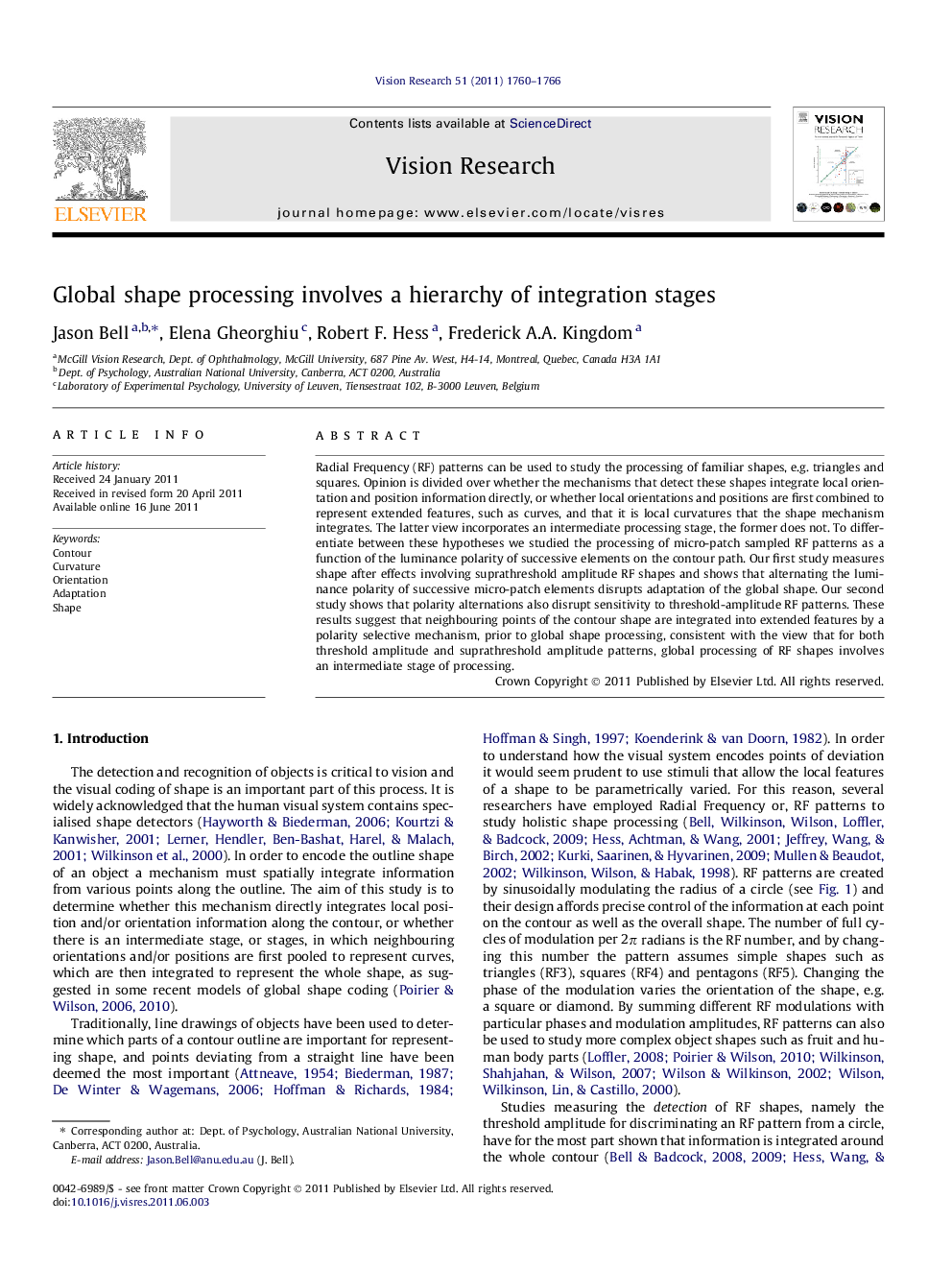| Article ID | Journal | Published Year | Pages | File Type |
|---|---|---|---|---|
| 4034297 | Vision Research | 2011 | 7 Pages |
Radial Frequency (RF) patterns can be used to study the processing of familiar shapes, e.g. triangles and squares. Opinion is divided over whether the mechanisms that detect these shapes integrate local orientation and position information directly, or whether local orientations and positions are first combined to represent extended features, such as curves, and that it is local curvatures that the shape mechanism integrates. The latter view incorporates an intermediate processing stage, the former does not. To differentiate between these hypotheses we studied the processing of micro-patch sampled RF patterns as a function of the luminance polarity of successive elements on the contour path. Our first study measures shape after effects involving suprathreshold amplitude RF shapes and shows that alternating the luminance polarity of successive micro-patch elements disrupts adaptation of the global shape. Our second study shows that polarity alternations also disrupt sensitivity to threshold-amplitude RF patterns. These results suggest that neighbouring points of the contour shape are integrated into extended features by a polarity selective mechanism, prior to global shape processing, consistent with the view that for both threshold amplitude and suprathreshold amplitude patterns, global processing of RF shapes involves an intermediate stage of processing.
► We investigated whether global contour shape processing involves an intermediate stage. ► Luminance polarity alternations disrupt shape processing, consistent with an intermediate stage. ► These findings resolve a point of contention in the current shape literature.
